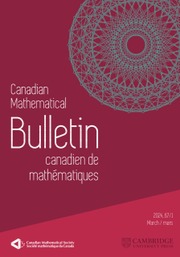Crossref Citations
This article has been cited by the following publications. This list is generated based on data provided by Crossref.
Cegarra, A.M.
and
Remedios, Josué
2005.
The relationship between the diagonal and the bar constructions on a bisimplicial set.
Topology and its Applications,
Vol. 153,
Issue. 1,
p.
21.
Cegarra, A.M.
and
Khmaladze, E.
2007.
Homotopy classification of graded Picard categories.
Advances in Mathematics,
Vol. 213,
Issue. 2,
p.
644.
Carrasco, Pilar
Cegarra, Antonio M
and
Garzón, Antonio R
2010.
Nerves and classifying spaces for bicategories.
Algebraic & Geometric Topology,
Vol. 10,
Issue. 1,
p.
219.
Carrasco, P.
Cegarra, A.M.
and
Garzón, A.R.
2011.
Classifying spaces for braided monoidal categories and lax diagrams of bicategories.
Advances in Mathematics,
Vol. 226,
Issue. 1,
p.
419.
Calvo, M.
Cegarra, A. M.
and
Heredia, B. A.
2014.
Bicategorical homotopy fiber sequences.
Journal of Homotopy and Related Structures,
Vol. 9,
Issue. 1,
p.
125.
Cegarra, Antonio M
and
Heredia, Benjamín A
2014.
Comparing geometric realizations of tricategories.
Algebraic & Geometric Topology,
Vol. 14,
Issue. 4,
p.
1997.
Cegarra, Antonio M
and
Heredia, Benjamín A
2014.
Comparing geometric realizations of tricategories.
Algebraic & Geometric Topology,
Vol. 14,
Issue. 4,
p.
1997.
Garzon, A.R.
and
Vitale, E.M.
2015.
On the second cohomology categorical group and a Hochschild-Serre 2-exact sequence.
Theory and Applications of Categories,
Vol. 30,
Issue. ,
p.
933.
Garzón, A. R.
2017.
Singular extensions and the second cohomology categorical group.
Journal of Homotopy and Related Structures,
Vol. 12,
Issue. 2,
p.
447.


